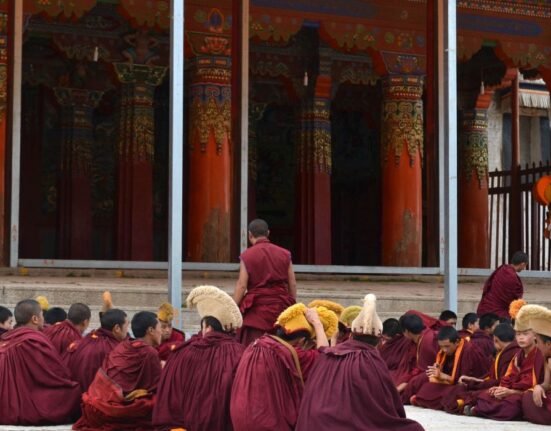Peace is not just a verbal promise; it is something that can be felt within. We can even sense others’ inner peace through their energy or eyes. But in today’s restless world, where material gain dominates social, political, and ecological contexts, a zero-sum mentality has become central to life, and peace is missing. Enduring peace should be a top priority.
The conflicts and the approach to solving them took the form of violence. A war mindset, penal justice systems, and military interference are all factors that cannot make us realise why humans are utilising violence. Peacebuilding and peace psychology facilitate the establishment of harmony in a nonviolent manner. According to the Global Peace Index 2024, 65 out of 163 countries are becoming more peaceful day by day. This indicates that they are resolving past issues and moving forward with “live and let live.”
Read More: 9 Healthy Ways to Channel Anger and Find Inner Peace
Peacebuilding: Concepts and Approaches
After World War II, conflicts between 92 countries increased, and by 2013 the battle deaths had reached the number 162,000 (Gupta, 2024). Through peacebuilding, disputes between these globally conflicted countries are resolved in nonviolent ways. It is the execution of techniques that are used to maintain peace in sensitive areas where there are the probabilities cultural and structural elements ignite the dispute.
By systematically addressing the root causes, conflict can move toward a more practical and judicious resolution rather than an aggressive stance, allowing future generations to benefit from these efforts. Before battles, everyone is charged with motivation, and the sense of purpose is heightened, but after every fight, the action seems meaningless at the cost of the loss of humanity.
Yet, we are constantly misled by the thought that revenge is equal to peace. Hence, by building peace, we can reduce the intensity of violence while connecting with different types of people on every level. Galtung, in 1969, categorised peace into negative peace and positive peace. Negative peace refers to the actions that stop the violence, while positive peace helps create an environment where justice and law are respected and followed.
International Alert is a Peace-building organisation that helps to create an inclusive society, which means supporting positive peace. Liberal peacebuilding and sustainable peacebuilding are two types that were proposed by Galtung, but John Paul Lederach (1997) is the main supporter of the sustainable peace concept. Liberal peacebuilding, which aims to rebuild the areas after the fight, and sustainable peacebuilding, which focuses on maintaining harmony through social and cultural understanding. Overall, it encourages countries to be on the path of inclusiveness, leading to global fraternity, equality.
Read More: The Psychology of Mental Peace
Peace Psychology
Peace psychology emerged when the world became a warfront, and at that time, William James spoke about how war was seen as a spiritual fulfilment through self-sacrifice. And he introduced a term, “moral equivalent of war”, which means suggesting that people provide services to society for social welfare. So, peace psychology offers us a lesson to think globally for better understanding and find a way to mend with others.
It also tells us the psychological reasons behind conflicts. This branch of psychology considers structural, cultural, and direct (physical harm) violence for study. Structural violence means discrimination, ostracisation, and cultural practices that are ingrained in cultures, such as prejudices (Christie et al., 2001). The war’s correctional approach is transformed through peace psychology and its disciplinary actions.
War mindset is not something we are born with; even all frontliners want to unite with their families, and that is why peace psychology can bring justice and opportunities for peace.
Read More: “From being peaceful to into pieces”: The Inner Journey of a People-Pleaser
Key Areas of Peace Psychology Include
- Negotiation: Peace promoters have to communicate compassionately, also giving chance to people to express their point of view. Advising or enforcing peace on others cannot make them mediators, instead helping them to understand of consequences, human rights, and showing the nonaggressive way of handling conflicts.
- Relationship development: Studying how structural violence is created and how its elements (prejudice, stereotypes, and social identity) affect conflicts within communities.
- Understanding past wounds and healing them: Violence toward others rises through cultural conditioning or traumas. So, resolving inner conflicts might be the answer to hatred.
Read More: Mindful Movement: A Pathway to Inner Peace
Practical Example
In Cambodia, village women are using peace as a weapon to defend themselves and their dear ones from armed groups. These women collaborated with peacemakers to stop violence by providing them food on condition of surrendering their weapons at the door. Standing together, unarmed but united, the women calmly faced the danger.
Their courage paid the violence stopped at their village’s edge. This powerful example shows how ordinary people, especially women, can create safety through nonviolence, empathy, and trust. It reminds us that peace doesn’t always come from power, but often, from the quiet strength of people working together (Broughton, G., 2013).
Read More: Positive vs. Negative Peace: Psychological Insights for Harmony
The interplay between Peacebuilding and Peace Psychology
Peacebuilding is about taking actions to transform societies, and for that, peace psychology shows us the way to build a strong foundation of harmony through relationships, emotional connection. When emotions and cognition work together as a holistic approach to spread fair peace. Peace always comes from within then consequently, external factors and psychological factors are addressed through this collaboration to achieve wholesome peace.
For instance, peace supporters used trauma-informed therapy and acceptance through forgiveness to unite the community. Peace education plays a big part too, teaching children and adults alike how to listen, cooperate, and care for others.
An eye for an eye will only make the whole world blind.
Mahatma Gandhi
This can be a reminder to humanity why peacebuilding is important.
FAQs
1. What is the difference between peacebuilding and peace psychology?
Both work together. Peace psychology provides the root causes of trauma, conflicts, and it also shows direction on how to establish peace, along with psychological factors, their impact. Peacebuilding means changing the system for the better. While resolving the conflicts, peacebuilding emphasises justice, equity, and fair treatment.
2. What are the 4 pillars of peace psychology?
According to The International Journal of Indian Psychology, peace psychology deals with war, conflicts, human rights, peace, and justice. Research, education, practice, and advocacy are the four pillars of peace psychology.
3. What is Peace Psychology?
The study of the thoughts and actions that result in violence is known as peace psychology. It also looks for strategies to prevent violence and promote peace while advancing equality, respect, and dignity for everyone.
References +
Lederach, J. P. (1997), Building Peace. Sustainable Reconciliation in Divided Societies, Washington, D.C.: United States Institute of Peace Press.
Galtung, J. (1969) “Violence, Peace, and Peace Research”, Journal of Peace Research 6 (3):167-191.
Christie, D. J., Wagner, R. V., & Winter, D. D. (2001). Peace, conflict, and violence: Peace psychology for the 21st century. Prentice Hall.
Broughton, G. (2013). Four elements of peacebuilding: How to protect nonviolently. Canadian Friends Service Committee. https://quakerservice.ca/wp-content/uploads/2013/11/Four-Elements-of-Peaceb uilding.pdf
Gupta, C. (2024, June 17). Global Peace Index 2024: Top 10 peaceful countries in the world—where does India rank? The Indian Express. Retrieved June 6, 2025, from https://indianexpress.com/article/trending/top-10-listing/top-10-peaceful-countr ies-in-the-world-global-peace-index-2024-9360666/













Leave feedback about this